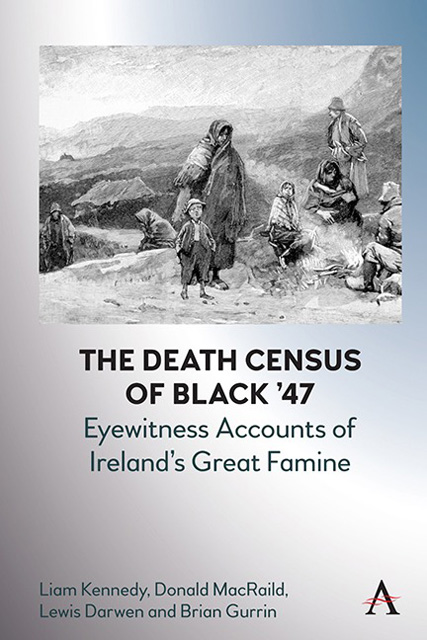Chapter Four - Estimates of Famine Mortality in the Death Census
Published online by Cambridge University Press: 17 October 2023
Summary
The Death Census provides quantitative evidence on deaths in normal times and deaths during the early course of the Famine. This is the statistical spine of the work, and the numbers are potentially of great significance, relating to different parts of the country and different social and economic conditions. But some problems need to be addressed. In the first place, many parish priests were not in the habit of keeping burial registers, which helps explain why so few records are to be found in the archives. Of those that did keep registers, we might wonder if the priests were providing a comprehensive record of burials, even in ordinary times. When famine was ravaging their local communities, it is easy to imagine that overworked clergymen, some themselves weakened by faminerelated disease, might feel they had more urgent tasks than keeping a record of deaths and burials. As we noted, John O’Connell acknowledged as much when first introduced to the idea of a mortality count. We might also wonder if some clergymen failed to understand fully the instructions issued by the Repeal Association. Moreover, some might have been tempted to exaggerate famine mortality to score a political point or to secure financial or food aid for the famished amongst their parishioners. Clearly, the validity of the survey needs to be appraised.
The Death Census
Although the Death Census was conceived originally as a national survey, these plans were quickly scaled back; and, in the end, responses were received from one hundred parishes. This represents one in ten parishes, as there were just over one thousand Catholic parishes in the country in the 1840s. Viewed as a sample of the total this is quite a respectable sampling fraction. A more significant limitation is that the sample is far from being a representative one. A glance back at Map 2.1 confirms that the returns were geographically skewed. The constituent parts of the western archbishopric of Tuam are well covered – helpful as western parishes suffered heavily – and the south and south-west of the country are reasonably well represented. There are scattered returns from the north of Ireland.
- Type
- Chapter
- Information
- The Death Census of Black '47Eyewitness Accounts of Ireland's Great Famine, pp. 55 - 68Publisher: Anthem PressPrint publication year: 2023

